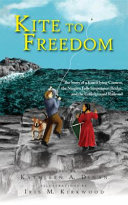2018 School Spending Survey Report
Kite to Freedom: The Story of a Kite-Flying Contest, the Niagara Falls Suspension Bridge, and the Underground Railroad
Cross Your Fingers.
Mar. 2021.
102p.
Tr $16.95. ISBN 9781942483717; pap. $12.95. ISBN 9781942483700.
COPY ISBN
VERDICT While informative and ambitious, this awkward narrative bites off more than it can chew. One could imagine factual components in sidebars so that the narrative alone doesn’t have to carry the weight of this interesting slice of history.
ALREADY A SUBSCRIBER? LOG IN
We are currently offering this content for free. Sign up now to activate your personal profile, where you can save articles for future viewing






Be the first reader to comment.
Comment Policy:
Comment should not be empty !!!